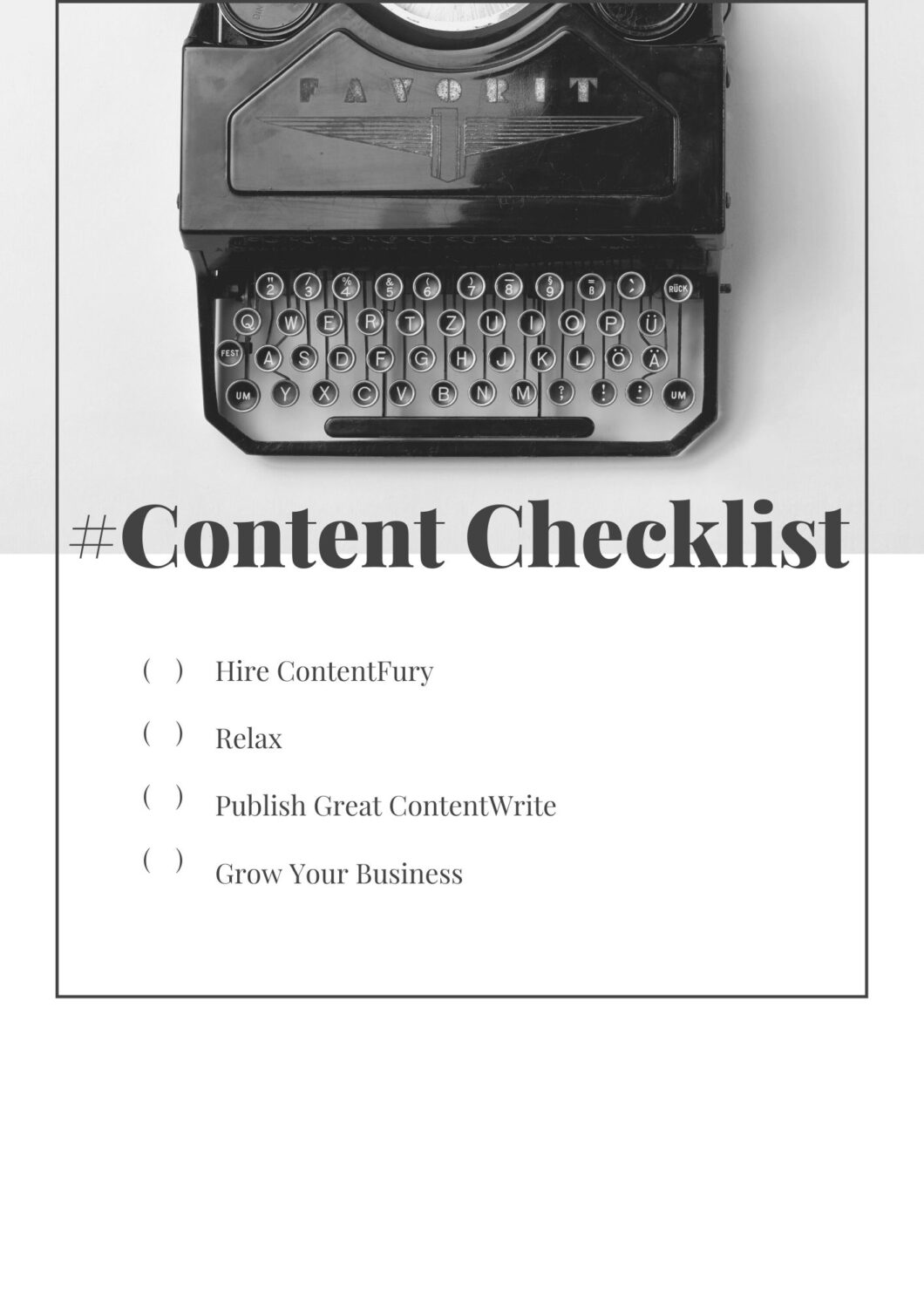This is the only checklist you will need to ensure that you are putting out your best, most SEO-optimized piece of content every time you hit PUBLISH.
There are essentially three aspects you need to cater to when creating content for humans and search engines: keyword research, on-page SEO, and content.
And so this checklist is separated into three parts to help you stay on top of things and cater to each of these three aspects with ease.
How to Use this Checklist
This list is pretty comprehensive, and will get you a surge of love from readers and Google alike. But at the same time, you may find it challenging to implement everything at once.
If that’s the case, don’t bother yourself too much. Do as much as you can, and see results nonetheless. The more tips you implement, the better your content will be.
Keyword Research Checklist
Keyword research is the bedrock on which all your SEO optimization efforts stand. Get it wrong, and you’re going to have an uphill struggle reaching the right audience even as you get ignored by search engines.
Get it right, and you would already be halfway towards fulfilling your SEO goals.
Discover Long Tail Keywords with “Google Suggest”
This is one of the most overlooked ways of getting high-quality long tail keywords to use in your content.
Here is what to do:
- Type in a keyword into Google’s search bar, but don’t press ENTER
- Take note of the related suggestions that show up underneath the keyword you typed in. Write them down somewhere secure like a spreadsheet.
You know these suggested keywords are gold because Google suggested them, meaning people are actively looking for them. So these are great keywords to lace into your content.
Another goldmine for long tail keywords is Google Keyword Planner, which is free to use and spits out data straight from Google.
Go Looking in Online Communities
What do online communities like Reddit, Quora, and Facebook groups have in common?
People talking about their shared problems and interests, that’s what.
Mining keywords is a bit of an art and a science, but generally when you enter these forums you want to look out for topics that have a lot of comments and reactions underneath. Those are hot button long tail keywords you can build content around and flesh out.
Identify Low Competition Keywords with KWFinder
The right tools can supercharge and speed up your content marketing efforts. KWfinder is a great tool that gives out a lot of data for each keyword, including data on how difficult it would be to rank for that keyword.
You want to choose keywords that have a high search volume but low competition.
Search for Question Keywords Using AnswerThePublic
Question keywords are perfect for blog posts and videos. Why? Because they solve problems, charting a path towards a resolution.
You can get dozens of questions keywords from AnswerThe Public. This free tool compiles questions that people are asking concerning a particular keyword online.
On-Page SEO
There are few tried and tested on-page SEO strategies you can implement now to start seeing results.
Include Your Keyword in Your URL
Your URL helps search engines like Google and Bing to understand what your page is talking about. Plus, an URL that is rich in keyword generally enjoys higher click through rate.
For example, since this page is about a content SEO checklist, I made the URL www.contentfury.com/content-seo-checklist
And that is that.
Use Short URLs
Keep your URLs short. Studies have shown that shorter URLs outrank longer URLs on Google.
Front-Load Your Keyword in Your Title Tags
It is not enough to adhere to the well-known advice to include a keyword in your title tag. You also need to put it in the right place, and that is as near the front as possible.
Embed Title Tag Modifiers
Title tag modifiers are phrases or words that you can add to your title tag to add more meaning and appeal to your content.
Some of the best examples are words like:
- Best
- Ultimate
- The current year (2020, 2019, etc.)
- Review
- Guide
- Report
Place Your Keyword Within the First 150 Words
Search engines place a lot of emphasis on the first 150 words of content to establish what any piece is about.
So place your keyword naturally as early as possible. Target the first sentence if you can.
Include Your Keyword in H1, H2, or H3 Tags
In addition to the main title of your post, you also want to include your keyword in at least one sub-heading (H2 or H3 tags).
Optimize Images
Images are the spice for your content. Unfortunately, Google is still terrible at understanding images. So you need to optimize your alt tags to make it easy for search engines to understand what your content is about.
Make Use of LSI Keywords and Synonyms
Google is smart enough to identify when you are stuffing keywords in order to rank. What you should do instead is use synonyms and latent semantic keywords to reinforce the subject that your content is talking about.
A good tool to help you find good LSI keywords is www.lsigraph.com
Use External Links
Make sure you link out to 5-8 high authority sites in your article. These show search engines that your content is well-researched and therefore worth trusting.
Use Internal Links
Link your new content to 2-5 other pieces of content on your site. And you want to use anchor text in your linking because that tells Google what the page you are linking to is all about. So if you want to link to a post on content marketing in your site, use “content marketing” as the anchor text.
Content Checklist
You really want to rank on Google? Then you really need great content. And not just any old content, you need SEO-optimized content.
The following steps will ensure you are putting your best foot forward as far as this is concerned:
Use the “Skyscraper Technique” to Create Evergreen Content
The Skyscraper Technique is a clever technique developed by Brian Dean of Backlinko, and involves 3 steps:
- Identify a popular piece of content in your industry or niche
- Create something better than it.
- Promote your content
For example, if you realize the best content on a particular topic outlines 30 tips to achieve a goal, you could create content that involved 100 steps as a way to top that.
Use Short Paragraphs to Increase Readability
You give your readers a hard time reading your content when you don’t separate your content into byte sized chunks. Long, difficult to read paragraphs are among the biggest reasons for a high bounce rate, which is a strong ranking factor.
Cover Your Topic In depth
Research has shown that content that handles topics in depth perform better than content that simply beats about the bush and talks about nothing. So prioritize “Ultimate” guides over “5 Tips to do XYZ” type of content if you want to easily attract attention and rise through the search engine ranks .
Make Use of Schema Markup
Schema markup is a truly powerful SEO tactic that is often under-utilized. Google has already stated that they matter as a ranking factor, so you want to do yourself a favor and start using them on your website as soon as you can.
Create the Right Content Formats
The truth is the majority of content on the internet is ignored. But there are certain content formats that have been shown to garner attention and perform better than others. These are:
- Original pieces authored by subject experts
- Content that provides a fresh angle
- Case studies
- Evergreen content that will remain relevant for years after you hit PUBLISH
The more authoritative or in-depth your work, the more likely it is to get noticed and perform well.
Make Use of Multimedia
Images and videos will make your content better and more relevant for your readers. But in addition to that, there have been several studies to show that the use of multimedia can help you rank in Google.
Use images, charts, infographics, videos, interactive polls and quizzes through out to spice up your content.
Sometimes, something as simple as a screenshot taken with your phone is all the multimedia you need to optimize your content further.
Ask Questions at the End
Don’t assume your readers know their way to the comment section. You want to be very clear on what you want them to do, so ask questions at the end concerning your content, and ask them to leave replies in the comment section. This builds engagement, which is in turn good for SEO.
Conclusion
Remember the more tips on this list you implement, the more people and search engines will love your content.
There are 21 tips in this list and you might find that a little difficult to implement. So we created a downloadable version you can carry around and sink your teeth into whenever you are creating content.
I would like to hear from you though. What do you think of this checklist? Are there any tips which you are already implementing in your content and website right now?

